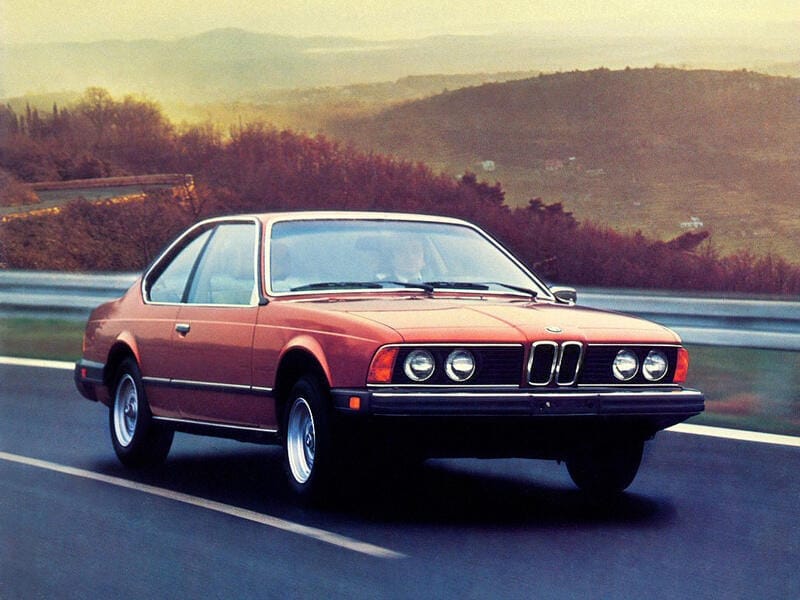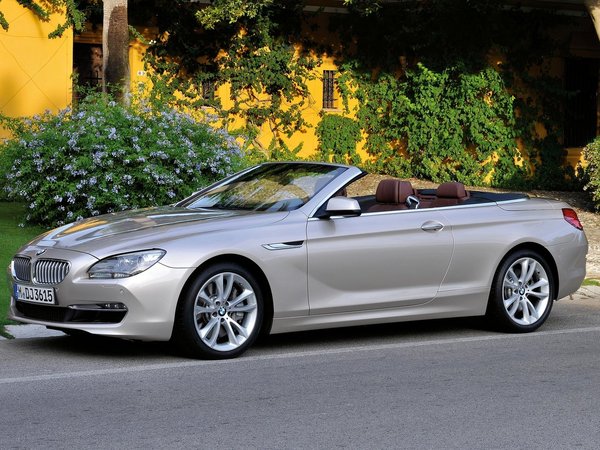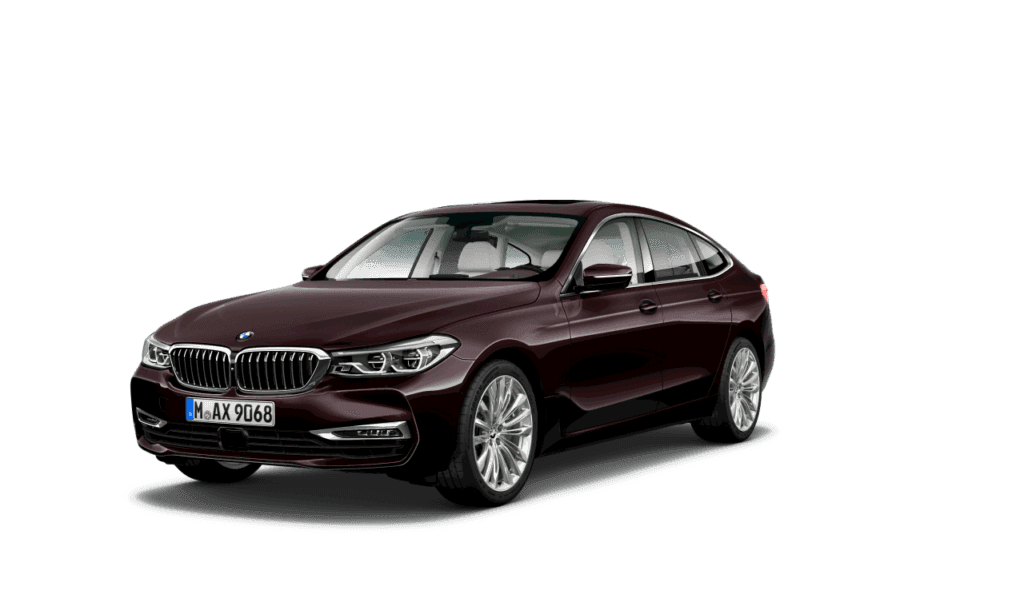Our accessories
BMW 6 Series
Click on your model :
BMW 6 Series: Elegance and sportiness
The BMW 6 Series embodies elegance, sportiness and innovation through its different generations, each marking a significant evolution in the world of grand touring cars. From its introduction with the first generation, the 6 Series E24, in 1976, to the latest iteration, the 6 Series G32, unveiled in 2017, this iconic lineage combines refined design, dynamic performance and cutting-edge technology.
Each 6 Series model has captivated car enthusiasts with its distinctive lines and sporty character. From the powerful E24, powered by in-line six-cylinder engines, to the versatile G32 with its cutting-edge technology and contemporary elegance, the 6 Series has constantly evolved to meet the expectations of sophisticated driving enthusiasts.
Let's delve into the history of the 6 Series, exploring its different generations, technological innovations, impressive performance and iconic designs that have helped forge the outstanding reputation of this line of grand touring cars. Let's discover how the 6 Series has combined luxury, sportiness and advanced engineering to create an unrivalled driving experience over the decades.
First-generation 6 Series
BMW 6 Series E24

The first generation of the BMW 6 Series, also known as the 6 Series E24, made its debut on the automotive scene in 1976 and lasted until 1989. Replacing the E9 coupés, it was produced exclusively as a two-door coupé. Under the hood, with the exception of the M635CSi/M6 models, the 6 Series E24 was powered by various in-line six-cylinder engines from the M30 family.
The M635CSi (or M6 in North America and Japan) paved the way for the M6 model line. Primarily powered by the M88 in-line six-cylinder engine in most markets, the M635CSi was driven by the less powerful S38 engine in North America and Japan, powering the M6.
In 1976, the BMW 6 Series took the market by storm as one of the fastest four-seater coupes available from dealers. Throughout its more than 13 years in production, the car has remained at the forefront of technological innovation, incorporating advances such as direct injection, modern electronics, and a catalytic exhaust gas cleaning system.
Conceived by the famous designer of the time, Paul Bracq, the coupé's design features a low beltline and spacious side windows. The dynamic side line, characterized by clean lines, offers uncompromising elegance, while ensuring a dynamic driving experience. In 1978, the BMW 635CSi further accentuated the car's sporty character with improvements such as reinforced anti-roll bars and firmer shock absorbers.
The BMW 6 Series underwent a technical update in 1982, and in 1984 the powerful BMW M635CSi took to German roads, powered by the M88 engine already present on the BMW M1. This top-of-the-range version was equipped with a reinforced 5-speed sports gearbox, a reworked chassis and a more powerful braking system, offering an exceptional driving experience.
In 1987, with the second restyling, the BMW 6 Series was further improved, with upgrades to the headlamps and engines.
Production period: 1976 - 1989
Engines: 2.8 - 3.5 liters (135 - 210 kW, 184 - 286 hp), 6 cylinders
Length/width/height: 4.755-4.815 mm/1.725-1.740 mm/1.355-1.365 mm
Second-generation 6 Series
BMW 1 Series E63

The second-generation BMW 6 Series, christened the 6 Series E63/E64, marked the revival of the 6 Series line from 2003 to 2010, including the coupé (E63) and cabriolet (E64) body styles. Conceived by renowned designer Chris Bangle, it attracted attention for its bold styling and innovative, if controversial, iDrive system.
This generation used a shortened version of the 5 Series E60 chassis, sharing some features with the latter. In 2005, the M6 version was introduced, powered by the V10 S85 engine and often coupled with the 7-speed automated manual transmission ("SMG III"). The BMW M6 Gran Coupé, a four-door version, was launched in November 2013.
The 2007 redesign brought subtle adjustments to the design and improvements to the interior, further reinforcing the coupe's sporty look. The range was optimized with the introduction of the BMW 650i Coupé and BMW 650i Cabriolet, powered by a 4.8-liter V8 engine developing 367 hp (270 kW).
Production period: 2003 - 2010
Engines: 3.0 - 5.0 liters (190 - 373 kW, 258 - 507 hp), 6, 8 and 10 cylinders
Length/width/height: 4.820 mm / 1.855 mm / 1.374 mm
Third-generation 6 Series
BMW 6 Series F12

The third generation of the BMW 6 Series, also known as the 6 Series F12, was marketed from 2011 to 2018, offering a range of body styles including a four-door sedan (Gran Coupe), a two-door convertible and a two-door coupe. First presented at the Shanghai Motor Show and the New York Auto Show in 2011, this generation brought significant improvements in terms of design, performance and technological features.
Initial models were equipped with a variety of engines, including a 3.0-liter inline six-cylinder, a 4.4-liter V8, and a 3.0-liter diesel six-cylinder, with the later addition of all-wheel-drive variants to the range. In 2015, the 6 Series underwent a facelift, bringing aesthetic changes and minor improvements in performance and fuel economy.
The F12/F13 M6 6 Series, powered by the twin-turbo S63 V8 engine, marked a first with the use of a turbocharged engine for the M6 range. Production of the coupé model ended in February 2017, followed by the cabriolet in February 2018, and the Gran Coupé in October 2018, although Gran Coupé units of the F06 generation are available as a 2019 model.
The elegant aesthetics of the 6 Series, combined with exceptional performance, made this generation a benchmark in the luxury car segment, also offering a convertible version with fabric soft top and a Gran Coupé variant for those seeking a balance between style and interior space. The BMW 6 Series F12 marked a milestone by combining exceptional driving comfort with modern aesthetics and top-of-the-range performance.
Production period: 2011 - 2018
Engines: 3.0 - 4.4 liters (235 - 441 kW, 320 - 600 hp), 6 & 8 cylinders
Length/width/height: 4.894 - 5.007 mm/1.894 mm/1.365 - 1.392 mm
Fourth-generation 6 Series
BMW 6 Series G32

The fourth-generation BMW 6 Series, represented by the BMW G32, was introduced in 2017 and remains available until 2023. Sporting a five-door fastback body, it is marketed as the "6 Series Gran Turismo", succeeding the previous generation 5 Series Gran Turismo.
Revealed online on June 14, 2017, the BMW G32 made its official debut at the Frankfurt Motor Show in September of the same year. Offering a range of engines including turbocharged 4-cylinder petrol configurations, 6-cylinder petrol engines and 6-cylinder diesel engines, most models feature rear-wheel drive, with the option of all-wheel drive (dubbed "xDrive" by BMW) on some models.
Offering extensive travel comfort, sovereign driving dynamics and luxurious space, this generation's BMW 6 Series Gran Turismo is distinguished by its agility thanks to a lightweight architecture incorporating aluminum and high-strength steels. Efficient engines, tailored suspension components and the option of Integral Active Steering contribute to a sporty, precise and comfortable driving experience. The body features flowing lines and a coupé-style roofline, reinforcing its sporty elegance, while the interior offers a luxurious, spacious cabin.
In 2020, the restyling included improvements to the front and rear ends, while new features were integrated into the standard equipment. Engines have also been optimized for greater efficiency. Optional extras include a translucent panoramic roof, ceramic appliqués on control elements, dynamic cabin lighting, and optional 4-zone automatic climate control. The optional Drive Assist Pro package offers advanced assistance systems, such as low-speed warning and emergency assistance.
Production of the BMW 6 Series Gran Turismo G32 runs from 2017 to 2023, marking a period when the combination of performance, luxury and technological innovation redefines the automotive segment.



